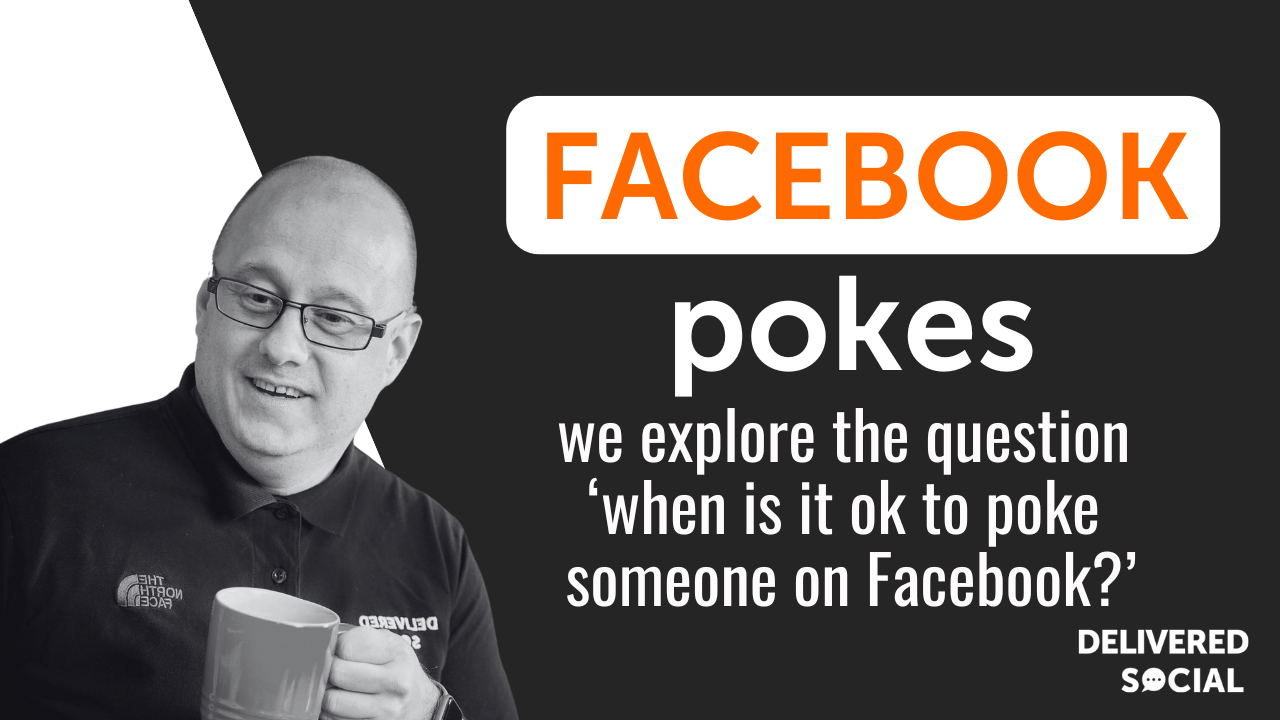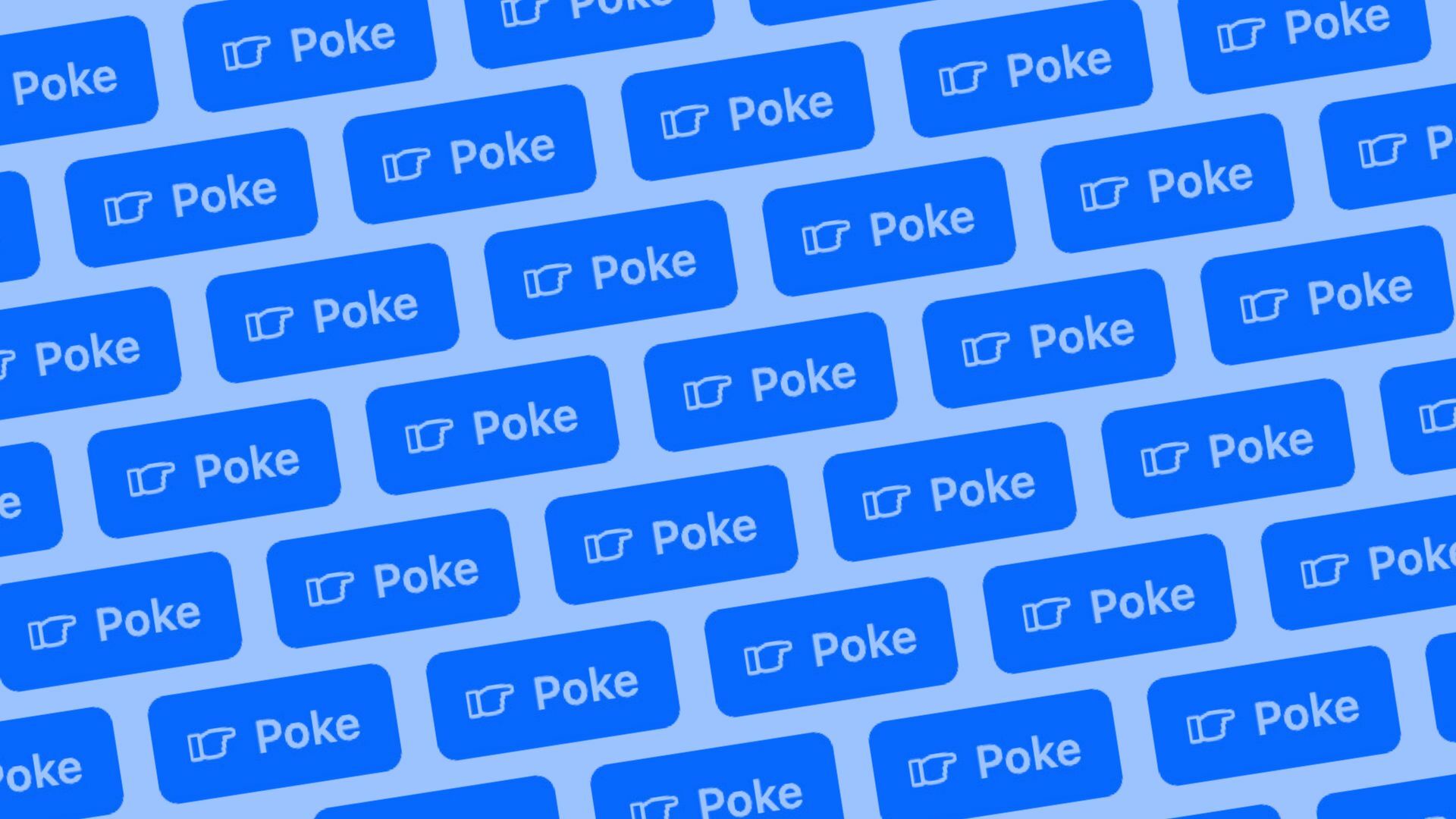
Did you know Facebook’s ‘poke’ feature has existed since 2004? That’s right – this quirky little function has been part of the social media giant’s arsenal for nearly two decades! But what exactly is a Facebook poke, and does it still have a place in our digital interactions in 2025?
You’re not alone if you’ve ever found yourself puzzled by a mysterious notification telling you someone has ‘poked’ you on Facebook. This seemingly simple feature has been the subject of much debate and confusion over the years. Is it a friendly nudge? A flirtatious gesture? Or is it just a relic of the social media past that refuses to die?
In this comprehensive guide, we’ll dive deep into the world of the Facebook poke. We’ll uncover their origins, explore their functionality, and even delve into the psychology behind why people still use them. Whether you’re a seasoned poker or a curious newcomer, buckle up – we’re about to embark on a journey through one of Facebook’s most enduring and enigmatic features!
The Origins and Evolution of the Facebook Poke
Let’s start at the beginning, shall we? The poke feature was introduced way back in 2004, when Facebook was still in its infancy. Mark Zuckerberg, the platform’s co-founder, has been rather coy about the feature’s original purpose. In a 2007 interview, he famously said, “We thought it would be fun to make a feature that has no specific purpose… So we created the poke.”
This ambiguity has been both a blessing and a curse for the poke feature. On one hand, it allowed users to interpret and use pokes in various ways, from friendly greetings to flirtatious overtures. On the other hand, it’s led to a fair bit of confusion and even anxiety among Facebook users who are unsure of how to respond to a poke.
Over the years, the poke feature has undergone several changes:
- Initially, pokes were prominently displayed on users’ profiles.
- Later, they were moved to a separate ‘pokes’ page.
- At one point, Facebook introduced a ‘poke war’ feature, encouraging back-and-forth poking.
- More recently, pokes have become less visible and are tucked away in the app’s menus.
Despite these changes, Facebook has maintained the poke feature, even as other social media platforms have introduced and retired similar functions. As of 2025, pokes remain a part of the Facebook ecosystem, albeit a somewhat hidden one.
Facebook’s official stance on pokes remains much the same as it was in 2007 – they’re a feature without a specific purpose, left open to user interpretation. This hands-off approach has allowed the poke to evolve organically, taking on different meanings within various social circles and age groups.
What Exactly Is a Facebook Poke?
At its most basic level, a Facebook poke is a way to interact with another user without sending a message. When you poke someone, they receive a notification that you’ve poked them. That’s it – no accompanying message, no explanation, just a simple notification.
But oh, the interpretations! Over the years, Facebook users have attributed all sorts of meanings to pokes:
- A friendly “hello”
- A gentle reminder that you exist
- A flirtatious gesture
- A way to check if someone’s profile is still active
- An inside joke between friends
- A passive-aggressive nudge
The beauty (or perhaps the frustration) of the poke lies in its ambiguity. It’s a blank canvas onto which users can project their own intentions and interpretations.
When you receive a poke, you’ll see a notification in your Facebook notifications tab. It will typically say something like “[User] poked you.” You’ll also have the option to poke them back, ignore the poke, or block future pokes from that user.
Pokes don’t appear on your timeline or in your friends’ news feeds. They’re a private interaction between you and the poker, which adds to their mysterious allure.
The social implications of sending or receiving a poke can vary widely depending on your relationship with the other person and the context of your interactions. A poke from a close friend might be seen as a playful gesture, while a poke from an acquaintance could be interpreted as an attempt to reconnect. And of course, a poke from a romantic interest might set hearts aflutter!

How to Poke Someone on Facebook: A Step-by-Step Guide
Now that we’ve covered what a poke is, let’s talk about how to actually send one. The process is slightly different depending on whether you’re using the desktop version of Facebook or the mobile app.
On Desktop:
- Go to the profile of the person you want to poke.
- Look for the ‘…’ button next to the ‘Message’ button.
- Click on the ‘…’ button to reveal a dropdown menu.
- If the option is available, you’ll see ‘Poke’ in this menu. Click it to send a poke.
On Mobile App:
- Open the Facebook app and go to the profile of the person you want to poke.
- Tap the ‘…’ button next to the ‘Message’ button.
- If available, you’ll see ‘Poke’ as one of the options. Tap it to send a poke.
It’s worth noting that the poke option isn’t always visible for every user. Facebook has made the feature less prominent over the years, and it may not be available for all of your friends.
There are a few limitations to keep in mind when poking:
- You can only poke someone once until they poke you back or remove the poke.
- You can’t poke someone who has blocked you.
- Some users may have adjusted their privacy settings to prevent pokes from certain people or everyone.
As for frequency, there’s no hard and fast rule. However, it’s generally considered good etiquette not to poke someone repeatedly in a short period. Remember, not everyone appreciates or understands pokes, so use them judiciously!
Responding to a Facebook Poke: Etiquette and Options
So, you’ve received a poke. Now what? When someone pokes you on Facebook, you’ll receive a notification. From there, you have several options:
- Poke Back: This is the most common response. It acknowledges the poke and continues the interaction.
- Ignore: If you’re not interested in engaging, you can simply ignore the poke. The notification will disappear after a while.
- Remove the Poke: This clears the poke from your notifications without poking back.
- Block Pokes: If you’re receiving unwanted pokes from someone, you can block them from poking you in the future.
The etiquette surrounding pokes is rather loose, given the feature’s undefined nature. However, here are a few unspoken rules that have developed over time:
- Don’t poke strangers: It’s generally considered odd to poke someone you don’t know.
- Don’t overdo it: Excessive poking can be seen as annoying or even creepy.
- Read the room: If someone isn’t poking you back, they might not be interested in this form of interaction.
- Consider the context: A poke might be interpreted differently depending on your relationship with the person.
When to poke? Well, that’s up to you! Some people use pokes as a way to say “I’m thinking of you” without the pressure of starting a conversation. Others use them to reconnect with old friends. And some folks just enjoy the playful, slightly absurd nature of the feature.
When to avoid poking? If you’re trying to maintain a professional relationship with someone, poking might come across as too casual. Similarly, if you know someone who isn’t fond of the feature, it’s best to respect their preferences and find other ways to interact. If you are looking to make a professional connection forget poking and find the user on LinkedIn or use an email finder to reach out to them.
The Psychology Behind The Facebook Poke
Now, let’s dive into the fascinating world of poke psychology. Why do people use this enigmatic feature, and what does your poke behaviour say about you?
- Attention-Seeking: For some, poking is a low-effort way to get someone’s attention. It’s like a digital tap on the shoulder.
- Maintaining Connections: Pokes can be used to keep in touch with friends without the need for a full conversation. It’s a way of saying, “Hey, I still exist!”
- Flirting: The ambiguity of pokes makes them a popular tool for subtle flirtation. It’s a way to express interest without putting oneself out there too explicitly.
- Nostalgia: For long-time Facebook users, pokes can evoke a sense of nostalgia for the early days of social media.
- Social Experimentation: Some users poke others out of curiosity to see how they’ll react.
Your poke behaviour might reveal aspects of your personality or communication style. Frequent pokers might be more extroverted or playful, while those who never poke might prefer more direct communication.
In the realm of online flirting, pokes occupy a unique space. They’re more overt than simply liking a post but less committed than sending a message. This makes them an attractive option for those testing the waters of a potential romantic connection.
As a form of digital communication, pokes are somewhat limited. They don’t convey any specific information beyond the fact that someone was thinking about you. However, this very limitation is what makes them attractive – they’re open to interpretation, allowing users to infuse them with meaning based on context and relationship dynamics.
Facebook Pokes in the Age of Advanced Social Media
As we navigate the complex landscape of social media in 2025, where do Facebook pokes fit in? Let’s compare them to other forms of social media interaction:
- Likes: More passive than pokes; likes are a way to acknowledge content without directly engaging the user.
- Comments: More substantial than pokes; comments allow for actual conversation.
- Direct Messages: More private and intentional than pokes, DMs are for when you actually want to say something.
- Story Reactions: Similar to pokes in their casualness but tied to specific content.
In many ways, pokes stand alone in their simplicity and ambiguity. While other platforms have introduced similar features (like the ‘nudge’ on LinkedIn), none have quite captured the quirky charm of the Facebook poke.
The relevance of pokes in 2025 is debatable. For some users, particularly those who’ve been on Facebook since its early days, pokes retain a certain nostalgic appeal. For others, especially younger users or those new to the platform, pokes might seem outdated or confusing.
Alternatives to pokes on Facebook include:
- Sending a wave in Messenger
- Reacting to a story
- Sharing a memory
- Using one of Facebook’s many interactive features in comments (like sending a GIF)
On other platforms, similar lightweight interactions include:
- Instagram: Sending a heart in direct messages
- Twitter: Retweeting without comment
- Snapchat: Sending a snap without text
As for the future of the poke feature, only time will tell. Facebook has shown a remarkable commitment to keeping pokes around, despite their decreased prominence. Perhaps we’ll see a poke renaissance, or maybe they’ll quietly fade into social media history. Either way, pokes have left an indelible mark on the landscape of digital interaction. If you want to increase your reach and build an engaged audience without relying on ads, check out our guide on how to grow a Facebook Page organically for proven strategies that work.
Poke Safety and Privacy Considerations
While pokes are generally harmless, it’s important to consider safety and privacy when using this feature. Here’s what you need to know:
Who can poke you on Facebook? By default, you can be poked by:
- Friends
- Friends of friends
- People you’ve poked before
However, you can adjust these settings to limit who can poke you.
Managing poke settings and notifications:
- Go to your Facebook settings
- Navigate to ‘Notifications’
- Find the ‘Pokes’ section
- Adjust your preferences for poke notifications
You can choose to receive notifications via email, push notifications on mobile, or turn them off entirely.
Dealing with unwanted or excessive pokes:
- If someone is poking you too frequently, you can remove the poke without poking back.
- For persistent pokers, you can block them from poking you in the future.
- In extreme cases, you can report harassing behaviour to Facebook.
It’s crucial to remember that while pokes are typically innocent, they can be used as a form of online harassment. If someone’s pokes are making you uncomfortable, don’t hesitate to use Facebook’s privacy and blocking tools.
Pokes and your overall Facebook privacy:
- Pokes don’t appear on your timeline or in your friends’ news feeds.
- However, the fact that you’ve poked someone or been poked is visible to anyone who can see your pokes page.
- Consider this when deciding whether to engage in poking, especially if you’re concerned about privacy.
By being aware of these considerations, you can enjoy the playful aspect of pokes while maintaining your digital well-being and privacy.
As we’ve uncovered in this deep dive into Facebook pokes, this simple feature has a surprisingly rich history and complex social dynamics. From its mysterious origins in 2004 to its current status as a somewhat hidden but persistent part of the Facebook experience, the poke has weathered the storms of social media evolution.
So, what is a Facebook poke in 2025? It’s many things:
- A digital nudge
- A playful greeting
- A flirtatious gesture
- A nostalgic callback
- A social experiment
- And, perhaps most importantly, whatever you want it to be
The enduring nature of the poke feature speaks to our human desire for simple, ambiguous forms of communication. In a world where our online interactions are increasingly complex and nuanced, there’s something refreshingly straightforward about a poke. It’s the digital equivalent of a gentle elbow nudge or a meaningful glance across a crowded room – open to interpretation yet undeniably attention-grabbing.
As we look to the future of social media, it’s unclear whether pokes will continue to have a place. But their longevity thus far suggests that there’s something fundamentally appealing about this quirky feature. Perhaps it’s the nostalgia factor, reminding long-time Facebook users of the platform’s early days. Or maybe it’s the feature’s versatility, allowing users to infuse it with their own meaning and intentions.
If you’ve never sent a poke before, why not give it a try? Choose a friend with a good sense of humour and see how they respond. You might start a poke war, spark a conversation, or simply share a moment of digital connection. And if you’re on the receiving end of a poke, remember that it’s all in good fun. Poke back, ignore it, or use it as an excuse to reach out – the choice is yours.
Ultimately, the Facebook poke remains a curious artefact of social media history that has managed to survive into the present day. It’s a reminder that sometimes, in the midst of all our high-tech communication tools, a simple, ambiguous gesture can be the most effective way to say, “Hey, I’m thinking of you.”
So, the next time you see that poke notification pop up, smile at the absurdity and charm of this enduring feature. In the fast-paced world of social media, where features come and go in the blink of an eye, the humble poke has proven it has staying power. And who knows? Maybe in another 20 years, we’ll still be pondering the meaning of this peculiar digital nudge.
We’d love to hear about your experiences with Facebook pokes. Have you been in a poke war? Did a poke ever lead to a meaningful connection? Or do you avoid pokes altogether? Share your thoughts in the comments below, and let’s keep the conversation going about this uniquely persistent piece of social media history (just don’t poke me on Facebook).
Remember, whether you’re a poke enthusiast or a poke sceptic, there’s no denying that this little feature has left its mark on the landscape of digital communication. So the next time you’re browsing Facebook, why not send a poke to an old friend? You never know where it might lead!
Interested In Working Together?
Introducing Delivered Social. We’re The Most-Rated Digital Agency In Surrey & Hampshire – We’ve Got To Be Doing Something Right.
Delivered Social is a digital marketing agency with one mission—to help businesses grow. We’re famous in Guildford and Portsmouth for our social clinics. We believe in free advice. We build lasting relationships because our team prides itself on being helpful, which our clients appreciate.
If you are looking for a new website or an agency to manage your social media presence, we can help.
If you need something slightly different, here's a super handy list of all our services, or you can always email us.


















